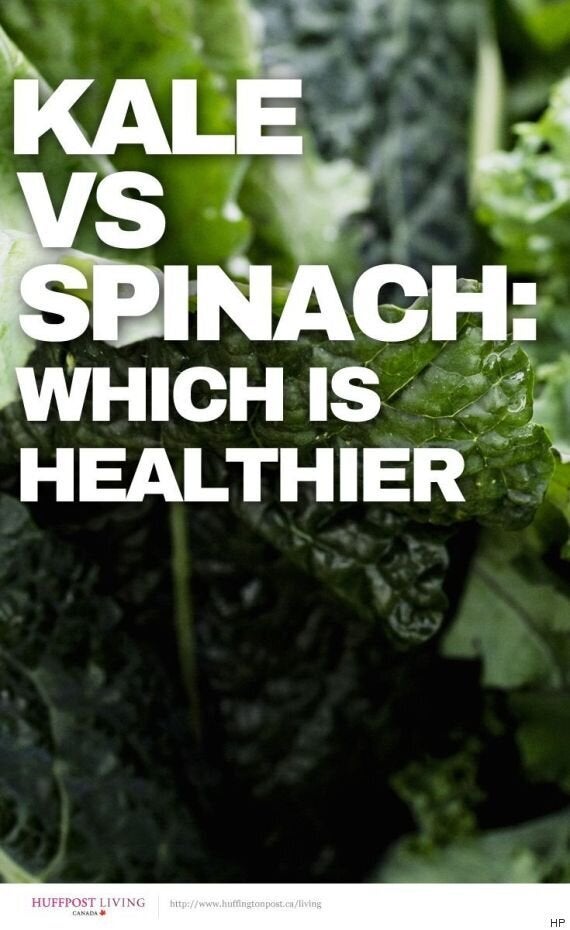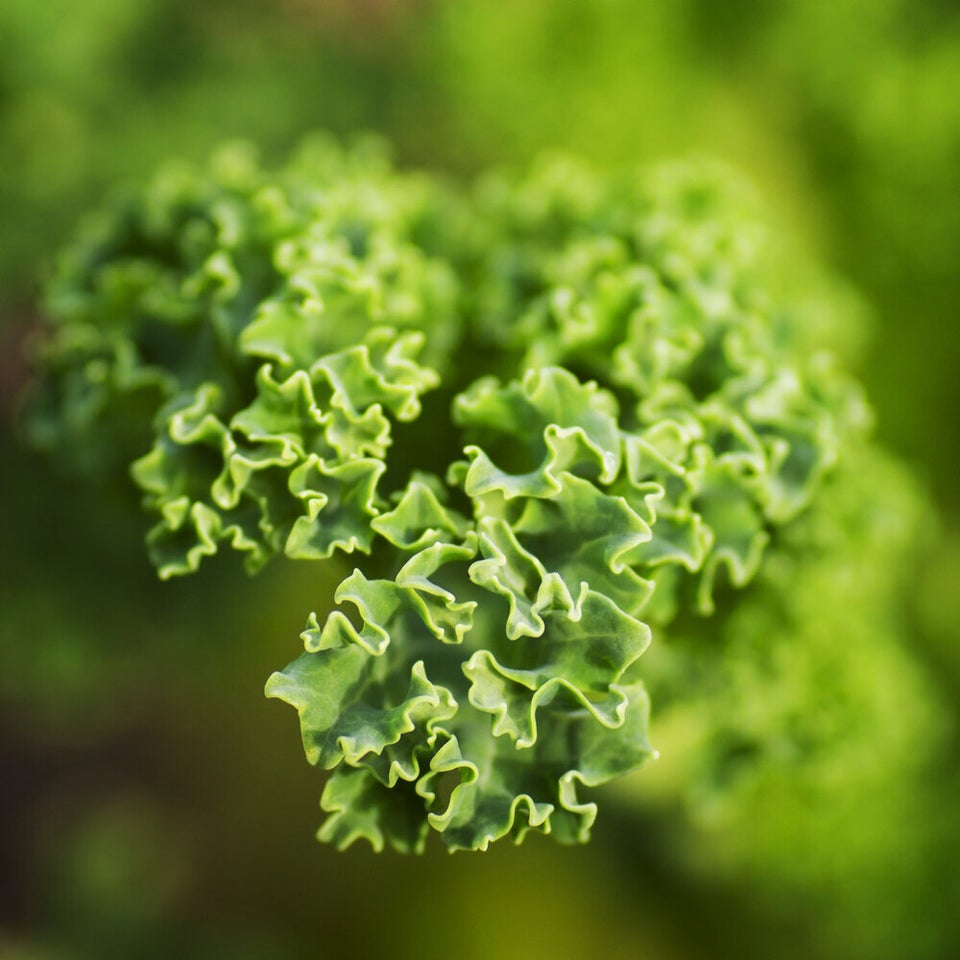
Kale versus spinach? Well, Popeye ate spinach to boost his strength — but should you be choosing trendy kale instead? The late-season leafy green is increasingly popular thanks to its impressive nutritional profile and its great taste. But it can also be an acquired taste for some — it's got a tougher texture than spinach, and for some people, kale seems like a step too far in the hippie direction.
The good news is that in a lot of ways, kale and spinach are nutritionally similar, and they're both very healthy foods.
But if you'd really prefer to stick to your Malabar instead of picking up some Lacitano, are you missing out? We compared one-cup servings of each vegetable in its raw, fresh state. Let's find out which is healthier: kale or spinach?
Iron: These two vegetables are very close in iron content, with kale slightly edging out spinach at 6 per cent and 5 per cent of the recommended daily intake (based on a 2,000-calorie diet) respectively. Good to know, as this mineral is key for blood health.
A tip: to increase non-heme iron absorption from vegetarian sources, include a little vitamin C. Just a squeeze of lemon juice on your salad will do the trick!
Fibre: The differences between the two leafy greens are negligible in other ways, as well. They both come in at one gram of dietary fibre per serving, important for keeping everything working properly down below. Studies have shown that colorectal cancer risk can be lowered by consuming lots of fibre from fruits and vegetables.
They've also got similar amounts of calories — though both amounts are negligible — and protein, at about a gram per serving.
Vitamin A: Spinach is a great way to get vitamin A, important for eye and skin health, into your diet — a one-cup serving provides 56 per cent of your recommended daily intake (RDI). But kale is a vitamin-A powerhouse, giving you a whopping 206 per cent of your recommended intake for the same serving.
Vitamin B6: Kale also beats out spinach in for vitamin B6, though less dramatically. The former has 9 per cent of your RDI for this essential vitamin, thought to be related to heart and brain health, though spinach still provides 3 per cent of your RDI.
Vitamin C: Remember that tip about vitamin C? You'll get a little in your salad anyway when you eat kale, which has 80.4 mg or 9 per cent of your RDI per one-cup serving compared to spinach's 8.43 mg or 1 per cent. Vitamin C is important for tissue growth and repair all over your body.
Vitamin K: We might not think about vitamin K very often, but it's important for our bodies — it helps protect our bones and is key in blood clotting. Both of these vegetables are a great way to get more in your diet, especially kale, which has 684 per cent of your RDI. Spinach has plenty as well, with 181 per cent.
Important: if you're on blood-thinning medication like warfarin or need to restrict your dietary vitamin K for any other reason, talk to your doctor before eating vitamin-K rich foods like these.
Folate: Folate, known as folic acid when it's added to foods and folate when it occurs naturally — is particularly important for women of child-bearing age, as it's related to the prevention of neural tube defects in developing fetuses. Spinach is the winner here, with 15 per cent of your RDI in every cup. Kale is still a source, but a less impressive one at 5 per cent for the same amount.
Calcium: When people think calcium they think dairy, but it's actually found in many vegetables as well. A cup of kale provides 9 per cent of your daily calcium needs, compared to 3 per cent for spinach. As well, spinach has compounds that could impede calcium absorption, so it shouldn't be your key source of the mineral.
Getting enough vitamin D is important for calcium too—your body won't absorb calcium properly without an adequate amount of vitamin D.
Copper: Copper is a trace mineral, so we don't need a lot of it in our diets, but we do require it for the production of red blood cells; it's also related to nerve and immune health. Kale is a good way to get it, with 10 per cent of the RDI in a cup, while spinach also has a little bit at 2 per cent.
Manganese: It's another mineral our bodies need in small amounts, and kale has you covered at 26 per cent of the RDI per serving. Spinach isn't too shabby either, giving you 13 per cent of your daily manganese, important for forming connective tissue and sex hormones.
Verdict: While kale is a better source for some essential vitamins and minerals — including manganese, copper, calcium, and vitamins A, C, B6, and K — spinach is a richer source of folate and an equally good source of iron and fibre. And both foods are very healthy choices! Kale might have the edge here, but spinach is no slouch.
